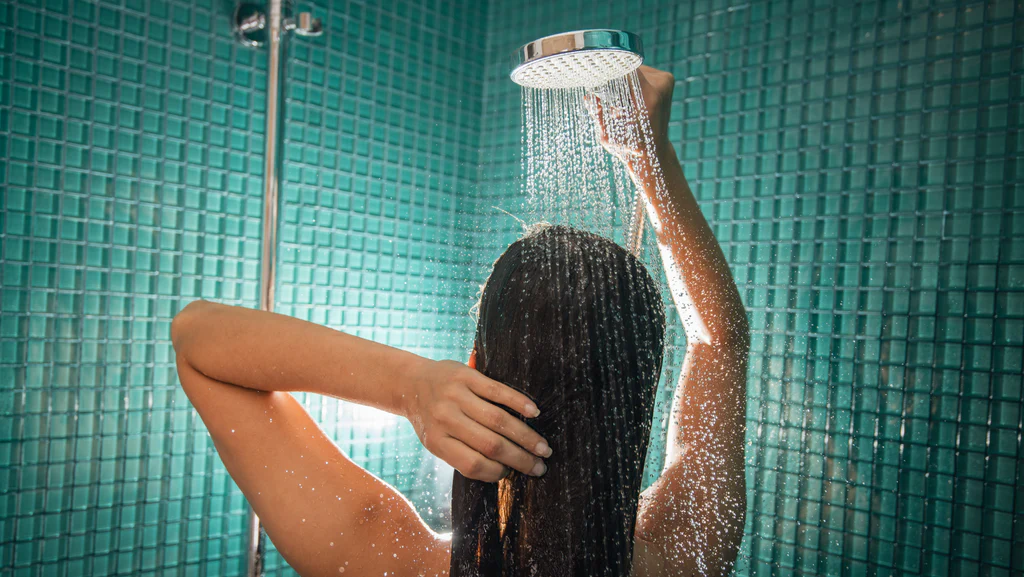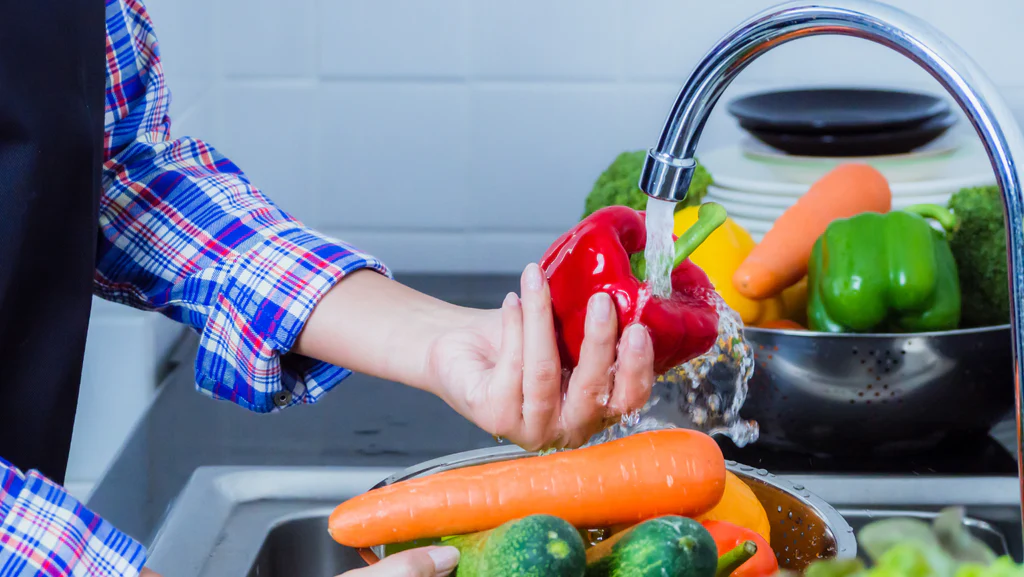According to the Water Footprint Calculator, on average in the U.S., water use at home (water from the tap, toilet, dishwasher, etc.) adds up to about 138 gallons per household per day or 60 gallons per person per day. To paint an even clearer picture, a 2016 survey from the Water Research Foundation tracked the daily indoor water usage across the U.S. Here’s how it’s broken down: Toilets (24%), Showers (20%), Faucets (19%), Clothes washers (17%), Leaks (12%), Other (8%)

Starting with the biggest consumers of water, we’ll give you some actionable ways to conserve water, save money, and do well for the planet. If you don’t think you have the discipline to stick to the below water conservation actions, don’t give up. We recommend looking at your water meter every week or investing in a smart home water monitoring device that allows you to monitor your water consumption 24/7. Monitoring will make it easier to manage and improve your water consumption. Just like people who track their steps have the desire to reach a goal of 10,000 steps per day (or better), monitoring your water meter will motivate you to keep your water consumption on a budget and encourage you to conserve even more!

TOILETS
Toilets can use anywhere from 1.5 to 7 gallons of water per flush. So it’s easy to imagine how that adds up throughout the day. Luckily, there are many simple ways to save water at home, starting with the humble toilet.
Replace old toilets with new low-flow units. Flushing is the biggest water hog in the house, especially if you have older toilets that can use 5 to 7 gallons of water per flush. If your home was built or remodeled after 1994, you probably have newer water-efficient toilets consuming 1.5 gallons or less. To really save those gallons, consider installing water-efficient toilets if your home doesn’t already have them. Thankfully, many water utilities offer rebates for high-efficiency toilets.
Install a toilet tank bag. Not ready to purchase a new toilet? Consider installing a dual flush retrofit kit or a toilet tank bag to reduce the amount of water used per flush. Tank bags are easy to install and reduce the size of the tank and, therefore, the amount of water that goes down into the bowl every time you flush.
Practice “If it’s yellow, let it mellow. If it’s brown, flush it down.” Sure, this water conservation tip may not be for everyone, but it’s a simple way to save water without spending money. Remember: You save between 1.5 and 5 gallons every time you skip a flush!
Repair any leaky toilet. A leaky toilet can waste about 200 gallons of water every day. You can detect a leaking toilet by adding a leak-detection tablet (or a few drops of food coloring) to the tank. If color appears in the bowl without flushing, there’s a leak that should be fixed!
Don’t waste water by using your toilet as a wastebasket. Throw tissues and other bathroom waste in the garbage can, which doesn’t require any water.

BATH AND SHOWER
Everyone has heard the phrase, “save water, take a 5-minute shower.” It really is true. However, cutting back on your shower time isn’t the only way to reduce your water consumption.
Think of baths as an occasional treat and stick to showers. A regular showerhead flows at a rate of 2.5 gallons per minute. This means that a 10-minute shower only uses 25 gallons of water, compared to a full bath which uses 35 to 50 gallons.
Cutting back your shower time by 3 minutes could save 2,190 to 2,920 gallons of water per year. The average shower lasts 8 minutes and uses around 20 gallons of water. While the allure of staying those few extra minutes in the warm water might be strong, making small changes to your daily shower length can save a lot of water in the long run!
Add water-saving gadgets to your shower. Want to know how to save water easily at home without doing a ton of work? Technology is here to help! There are a lot of water-saving devices you can install in your shower to help reduce your usage.
- On average, we wait 2 minutes for the shower to warm (that’s 5 gallons of water just down the drain!). Consider installing a ShowerStart Thermostatic Valve which automatically slows down water flow to a drip when the water temperature reaches 95°F (35°C), saving up to 2,518 gallons per year.
- If you’re still using an older showerhead, we strongly recommend replacing it with a newer low-flow unit. Although it is an investment, you’ll save money down the road! Many water utilities also offer rebates.
- Consider putting a bucket in the shower while waiting for the water to warm up. Use the water you catch for watering plants, cleaning, or flushing the toilet.

FAUCETS
Faucets are rarely an exciting topic, but they do play a significant role in water usage. Conventional kitchen and bathroom faucets flow between 3 and 7 gallons per minute. If your home was built or remodeled after 1994, you probably have low-flow faucets that flow as low as 1.5 gallons per minute and are much more water efficient.
If you still have an older faucet, consider installing an aerator. Faucet aerators are screens at the end of a faucet that controls the stream and limits the amount of water coming out. You can install them in the kitchen and the bathroom; plus, many water utilities offer rebates for these devices.
Turn off your bathroom faucet when you’re not using it. Turning off the water while brushing your teeth is one of the most famous water-saving tips. By turning off the water when brushing your teeth (or shaving), you can save up to 2,920 gallons per person per year. For a family of 4, that is almost 12,000 gallons of water each year!
There are several ways to improve your faucet usage in the kitchen that ultimately help reduce your water consumption.
- Boil food in as little water as possible. Use just enough water to submerge your pasta, potatoes, or whatever else you might be boiling. Plus, you keep more flavor and nutrients intact when cooking foods like veggies with less water.
- Don’t use your faucet as a power washer to clean vegetables and fruits. A bowl of water will work just as well! To be extra eco-friendly, you can use the leftover water from the bowl to water plants.
- If you have a dishwasher, use it to wash the dishes. Washing dishes by hand uses about 20 gallons per load. Newer water- and energy-efficient dishwashers use about 4 gallons per load, while older units use about 15 gallons per load, still less than washing the dishes by hand!

WASHING MACHINE
The washing machine is one of the best modern inventions that reduces not only the time it takes to wash a load of laundry but how much water is used to wash them. Yet even with this water-saving device already in our homes, there are plenty of ways to save more water!
Purchase an Energy Star-labeled washing machine. The U.S. Department of Energy states that a standard full-sized washing machine uses 20 gallons of water per load, but a highly efficient Energy Star-labeled washing machine only uses an average of 14 gallons of water. If you still have an older washing machine, consider replacing it with a newer water-efficient unit. Most water utilities provide rebates and upgrading saves the average household 1,475 gallons of water per year.
LEAKS
That constant drip is more than just annoying—it’s also a huge waste of water. If your sink or bathtub faucets leak one drop per second, you’ll waste more than 3,000 gallons annually. That’s the equivalent of 180 showers!
If you can’t DIY, hire a qualified plumber to fix those leaks! It will save a lot of water in the long run.
Turn off the faucet completely when you’re done with the sink. Drips from faucets are just like leaks – a big waste of water.
Sources:
https://saveourwater.com/en/How-to-Save-Water/Around-the-House
https://www.watercalculator.org/how-to-save-water/cut-indoor-water-use/

